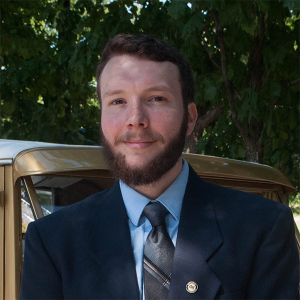 |
| Johnie Sublett |
The American Institute for Aeronautics and Astronautics (AIAA) this week announced that Johnie Sublett, a doctoral student at the Daniel Guggenheim School of Aerospace Engineering, was selected as one of the two recipients of the 2019 Zarem Graduate Student Award for Distinguished Achievement.
Sublett won the astronautics award for a paper based on his master's thesis, “Design and Testing of a Fault-tolerant Space Suit.” The same paper also took home first place in the graduate student paper competition at the 70th International Astronautical Congress, held 21–25 October in Washington, D.C. Sublett will also be presenting this same research at AIAA's 2020 Sci Tech Conference in Orlando this coming January.
A native of Pensacola, Florida, Sublett is working on fault-tolerant space suits that can protect astronauts from many of the puncture risks associated with planetary surface operations.
"State-of-the-art EVA [extra-vehicular activity] technologies have some catching up to do to enable long-term human planetary surface operations and habitation," said Sublett, a 2018 recipient of a NSF Graduate Research Fellowship. "My work is looking at how to deal with some of the challenges associated with dealing with a foreign and hostile space environment."
The Abe M. Zarem Award for Distinguished Achievement is given annually to graduate students in aeronautics and astronautics who have demonstrated outstanding scholarship in their field and who are pursuing graduate degrees. Also receiving a Zarem award for aeronautics was Oregon State University grad student Cole Anderson.
“Space suits protect their occupants from the hostile environment of space by maintaining a safe breathing atmosphere, with a pressure bladder containing the requisite internal gas pressure,” Sublett explained.
“If this pressure garment is punctured or damaged, the suit can quickly depressurize, leading to rapid loss of consciousness, asphyxiation, and death. However, if a puncture could be detected and isolated, even major suit punctures would become survivable. Thus, the suit system I'm working to demonstrate includes a distributed array of pressure sensors and inflation cuffs that can detect, seal against, and isolate any punctures in the limbs of the suit.”
Attending IAC in October put Sublett in contact with subject-matter experts in the field of space suit design and extravehicular operations who gave him feedback about his designs.
“I also had the chance to meet and chat with some of the leading experts in human spaceflight and Mars exploration, which was incredible,” Sublett said.
His career goal is to work on human planetary exploration and spaceflight operations, either on the moon or Mars. “I think we're entering a golden age of space exploration. There now exists the public desire, technological capabilities, and launch infrastructure to enable humans to venture further, and to stay longer. Humans that are alive today will be the new pioneers of our species.”